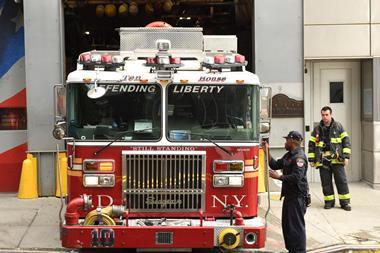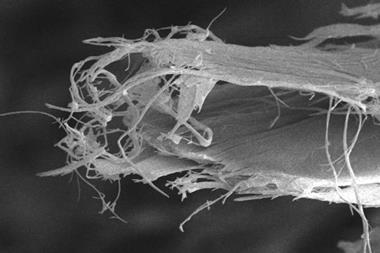US Environmental Protection Agency scientist who was fired after warning about toxic dust at Ground Zero reinstated by court
A senior chemist in the US Environmental Protection Agency’s (EPA), who was fired in 2010 after speaking out about the dangers of the dust at the World Trade Center (WTC) wreckage following the 11 September 2001 attacks, has won her job back.
In a 4 May ruling, a federal civil service court unanimously overturned the sacking of Cate Jenkins, who was working in the hazardous waste identification division, ordering that her job at the EPA be restored by 25 May and that she be awarded back pay with interest. In its decision, the Merit Systems Protection Board (MSPB) determined that Jenkins’ constitutionals rights were violated because she was not fully informed of the allegations against her and was not given an opportunity to respond to them before being fired.
Jenkins, who worked for the EPA for more than 30 years, was fired after being accused of threatening her supervisor. But her attorney, Paula Dinerstein, says that the claim is utterly false. ‘We believe that she was fired in order to both silence her and discredit her because of her advocacy about the World Trade Center and EPA’s standard concerning corrosivity,’ she tells Chemistry World.
Shortly before the allegation of threatening behaviour was made, Jenkins sent information to her supervisors and others about litigation filed against the EPA by first responders - firefighters and rescue workers who helped at the Ground Zero site for extended periods and now experience health problems. In that correspondence, Jenkins informed them that she might be called to testify because the plaintiffs’ attorneys were using her work to support their case.
Earlier attempts to eject Jenkins from the agency were made by EPA officials, but they had determined that her activities were legal and they couldn’t stop her, Dinerstein says.
Concerns aired
In fact, Jenkins had been a thorn in the side of the EPA ever since the 11 September attacks. Her early public disclosures of asbestos in the dust of the WTC ruins and charges that that the EPA wasn’t measuring it or ensuring that it was cleaned up properly embarrassed the agency. She later publicised that the EPA’s standard of what constituted a hazardous level of corrosivity in the residual dust around Ground Zero was inadequate. ‘If the standard had been correct, then there would have been reason to warn the first responders not to go in there without respirators,’ Dinerstein says. Corrosive dust at that level not only causes immediate chemical burns, which can cause permanent tissue damage, but it also lowers the body’s defences to other toxic substances in the dust that gets into the lungs, she adds.
Jenkins charged, among other things, that the EPA used improper and fraudulent test methods to determine the pH levels of the caustic WTC dust. She claimed that the labs the agency used were adding large quantities of water to the dust before testing it, lowering its pH.
The MSPB’s decision solely addressed Jenkins denial of due process. The board didn’t address whether she had been retaliated against as a whistleblower.
A parallel case involving Jenkins’ sacking is pending before an administrative law judge at the Department of Labor. That case addresses whether she was targeted because she was a whistleblower and the hearing is now being finalised.
Health problems
Meanwhile, a recent study offers evidence that exposure to toxic debris at Ground Zero causes cancer. Medical journal The Lancet reported in September 2011 that male firefighters exposed to dust and smoke at Ground Zero have a 19% higher chance of developing cancer than colleagues that weren’t exposed1.
That finding came roughly a month after the National Institute for Occupational Safety and Health (NIOSH) ruled that the scientific and medical findings in the peer-reviewed literature provided ‘insufficient evidence’ to draw a link between the WTC dust following the 11 September attacks and cancer. As a result, NIOSH determined that adding cancer, or certain types of cancer, to the list of WTC-related health conditions that are covered under legislation providing care for these first responders was unnecessary.
Beyond cancers, many of these first responders - who have been hailed as heroes - have developed illnesses including respiratory disease. Research late last year shows that WTC responders suffer from asthma at about twice the rate of the general US population2. While asthma rates remained stable among the general population, large increases were measured among WTC responders between 2000 and 2005. When comparing asthma rates of WTC responders the year before the attacks to 2005, rates increased by 40 times, the study showed.
For its part, the EPA refused comment on the 4 May ruling, saying only that it is reviewing the board’s decision.
Rebecca Trager
References
H Kim et al, Am. J. Ind. Med., 2012, 55, 44 (DOI: 10.1002/ajim.21025)












No comments yet